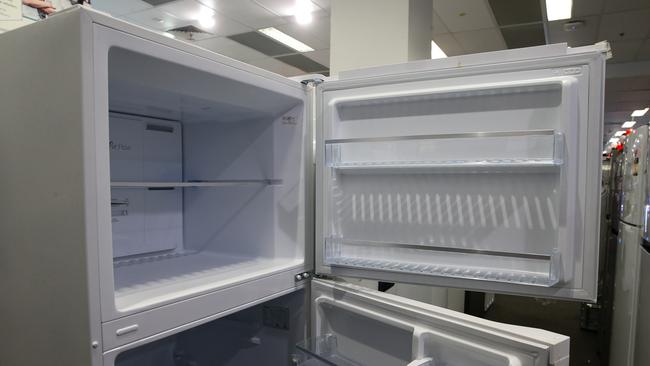Five common items adding hundreds to your energy bill this summer season revealed
A few small lifestyle changes could save Aussies hundreds of dollars on their power bills this festive season, a leading electrical expert has revealed.

Money
Don't miss out on the headlines from Money. Followed categories will be added to My News.
Common household items like fridges, washing machines and microwaves are secretly adding hundreds of dollars to your power bill - and there are some simple lifestyle changes that could offset the price pain.
Research by Finder shows 27 per cent of Aussies rate their energy bill as one of their most top stressful expenses.
According to the comparison site, this is due to Aussies are paying on average $408 on their energy bills.
Meanwhile, Compare Club’s research shows the default price of electricity has gone up by 25 per cent in NSW, SA and South East Queensland between 2019 and 2024.
It is worst for Aussies in Victoria, who are now paying 27 per cent more on their power bills.

While prices remain high, the pain could be even worse with the ABS showing electricity prices were down 35.6 per cent compared to a year ago, as state and federal rebates help offset some of the costs.
While prices remain high, electrical expert Chris Madikian, said Aussies can significantly save money by reducing the cost of some of the bigger energy draining items.
“As energy costs continue to rise, being aware of the most energy-intensive appliances, and knowing how to use them efficiently, can lead to substantial savings,” Mr Madikian said.
”By making small adjustments like washing clothes in cold water or cleaning vacuum filters, homeowners cannot only lower their bills but also reduce their environmental impact. It’s all about making smarter choices with the devices we rely on every day.”
Fridge
It probably comes as little surprise, but the typical household fridge adds approximately 8 per cent to the household bills due to running 24 hours a day 7 days a week.

This is adding a whopping $172.36 to the average household’s bills per year.
But for those who are worried about the price of keeping their produce cool Mr Madikian says by keeping the fridge in a cool, well-ventilated space away from a heat sources, making sure seals are tight and not overloading the fridge can help Aussies reduce the costs
Washing machine
Another major costing can be the household washing machine, which can quickly add another $65 per year onto the energy bills.
Much of this comes to using hot water taps or using the washing machine more frequently then required.
Mr Madikian said by switching to a cold water cycle for every day use or by running full loads of washing only, households can reduce this cost.
Microwave
Aussies might also be spending more on their electricity bills then necessarily by frequently using a higher paid appliance like the microwave. This could add another $30.66 per year to the typical household’s budget.
But using a suited to its efficiency, like reheating or steaming vegetables, but consider using alternative methods, such as batch cooking larger meals in the oven, to reduce multiple uses.

Toaster
While the family toaster is unlikely to set you back too much, Mr Madikian said it is still worth optimising. By using it back-to-back consumers are using more energy than necessary, especially if left plugged in.
By putting a toaster on energy saver settings or unplugging it when it is not being used, households can cut back on the $25.55 they are spending each year.
Vacuum cleaner
While this is definitely a smaller energy user, older models are unsurprisingly inefficient and could cost households more than needed. While the average household is only spending $10.92 per year, by choosing an energy efficient vacuum or cleaning filters regularly Aussies could still save on their power bills.
Better still, Mr Madikian said households should swap from the vacuums to sweeping whenever possible
Originally published as Five common items adding hundreds to your energy bill this summer season revealed


